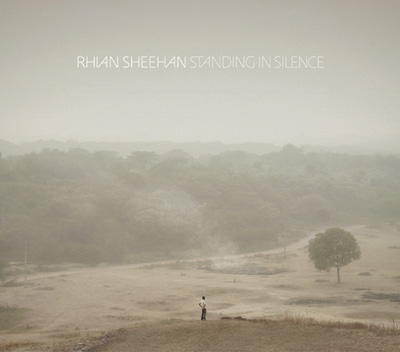I’ve been listening to some beautifully serene music lately. Not beautiful in the pretty sense, but in the sweep of the music, and not serene in the New Age relaxing sense, but in the almost aggressive focus and attention to detail.
It started recently with Steve Roach‘s Dynamic Stillness. The title itself speaks to that aspect of intense quietude I’m trying to articulate. The album harkens back to his classic Structures from Silence, a long-form composition of long-form tones, undulating out across a desert plain, but with tension that only comes from music that flies, but still retains the knowledge that you can fall. It’s scary up there.
 While Listening to the Roach, I was preparing for an interview with John Luther Adams and thinking how much of his music calls up the same spirit. The southwestern desert landscapes that have suffused Roach’s music for the last 20 years aren’t that different from the expansive Alaskan landscapes that inspire Adams. Both are austere, extreme, muted in color shadings and awe-inspiring in their mix of fragility and toughness. The only difference is about 100 degrees of temperature. But both artists are tapping a landscape of solitude and small but detailed wonders. Adams’ compositions like “Veils” and “In the White Silence” call up more than pristine fields of snow, walls of ice and stark shadows, but the solitude and inner calm they embody, an inner calm that, like Roach, is just on the edge of shattering. Adams’ 24/7 light and sound installation, The Place Where You Go To Listen, may be the true epic of ambient music. And if it wasn’t in Fairbanks, Alaska, more people would know about it. Adams writes about this work, based on realtime seismic, magnetic, weather and cosmological changes, in a wonderful book, also called The Place Where You Go To Listen. It’s not just a description of the process, but a meditation on our relationship to the environment and its manifestation in music.
While Listening to the Roach, I was preparing for an interview with John Luther Adams and thinking how much of his music calls up the same spirit. The southwestern desert landscapes that have suffused Roach’s music for the last 20 years aren’t that different from the expansive Alaskan landscapes that inspire Adams. Both are austere, extreme, muted in color shadings and awe-inspiring in their mix of fragility and toughness. The only difference is about 100 degrees of temperature. But both artists are tapping a landscape of solitude and small but detailed wonders. Adams’ compositions like “Veils” and “In the White Silence” call up more than pristine fields of snow, walls of ice and stark shadows, but the solitude and inner calm they embody, an inner calm that, like Roach, is just on the edge of shattering. Adams’ 24/7 light and sound installation, The Place Where You Go To Listen, may be the true epic of ambient music. And if it wasn’t in Fairbanks, Alaska, more people would know about it. Adams writes about this work, based on realtime seismic, magnetic, weather and cosmological changes, in a wonderful book, also called The Place Where You Go To Listen. It’s not just a description of the process, but a meditation on our relationship to the environment and its manifestation in music.
 Rhian Sheehan is a composer from New Zealand who gets to the same place on his CD, Standing in Silence. It’s an album born from isolation and innocence. He rummages through his daughters toy box, emerging with xylophones and music boxes that he electronically deconstructs and weaves into arrangements for electronics and ambient guitar that make the music itself sound like a lost artifact plucked from the dust and silence of another culture. Standing in Silence is a retreat from the more pop and beat oriented materiel of his earlier work into a place of solitude and repose. Although the landscapes of New Zealand are lush and dramatic, there’s a darker, brooding side to Sheehan’s innocence that looms around each corner of this major work.
Rhian Sheehan is a composer from New Zealand who gets to the same place on his CD, Standing in Silence. It’s an album born from isolation and innocence. He rummages through his daughters toy box, emerging with xylophones and music boxes that he electronically deconstructs and weaves into arrangements for electronics and ambient guitar that make the music itself sound like a lost artifact plucked from the dust and silence of another culture. Standing in Silence is a retreat from the more pop and beat oriented materiel of his earlier work into a place of solitude and repose. Although the landscapes of New Zealand are lush and dramatic, there’s a darker, brooding side to Sheehan’s innocence that looms around each corner of this major work.
Steve Roach, John Luther Adams and Rhian Sheehan are architects of stillness.
I had great interviews with John Luther Adams and Rhian Sheehan this week. Look for them in June on Echoes.
John Diliberto ((( echoes )))
